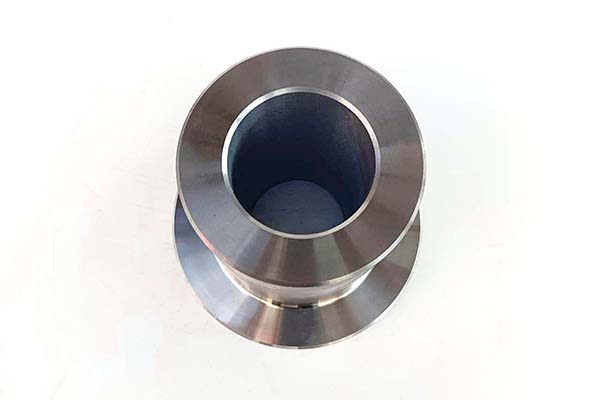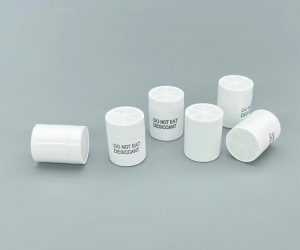1. Introduction to Product Prototyping Success
1.1 The Role of Prototyping in Product Development
Product prototyping is the critical bridge between conceptual design and market-ready solutions. It involves creating a preliminary version of a product to test functionality, design feasibility, and user experience. For instance, in the development of a new smartphone, the prototype stage allows engineers to experiment with different form factors, screen sizes, and button placements. By doing so, they can ensure that the final product not only meets the technological requirements but also feels comfortable in the user's hand and is intuitive to use.
Successful prototyping reduces risks, cuts costs, and accelerates time-to-market. A well - made prototype can identify potential design flaws early in the development process. This prevents costly rework later on, when changes would be more time - consuming and expensive. For Yigu Technology example, if a car manufacturer discovers during the prototyping phase that a new dashboard layout is causing visibility issues for the driver, it can be modified relatively easily. However, if this problem is not caught until the mass - production stage, it could lead to product recalls, damaged reputation, and significant financial losses.
2. Essential Steps for Prototyping Success
2.1 Define Clear Objectives
Before diving into the prototyping process, it is crucial to define clear objectives. This starts with aligning all stakeholders, including product managers, designers, engineers, and potential investors, on the goals. First, identify what problem the prototype is intended to solve. Next, determine what specific features need validation. Finally, establish the success criteria.
2.2 Choose the Right Prototyping Method
Selecting the appropriate prototyping method is essential for the success of the project. Different methods offer various advantages and disadvantages, and the choice depends on factors such as the nature of the product, budget, and time constraints.
3D printing is a popular method known for its fast turnaround time. It can create complex shapes with relative ease, making it ideal for products with intricate designs. For instance, when prototyping a new smartphone case with a unique, ergonomic grip, 3D printing can quickly bring the design to life. However, it has its limitations. The materials used in 3D printing often have limited material strength compared to traditional manufacturing materials. This means that the 3D - printed prototype might not be suitable for long - term, real - world use in scenarios where durability is crucial.
CNC machining, on the other hand, offers high precision and results in durable prototypes. It is well - suited for products that require tight tolerances, such as automotive parts or high - end consumer electronics components. A prototype of a new engine piston for a car, for example, would benefit from the precision of CNC machining. But this method comes at a cost. It is generally more expensive than 3D printing, and the lead time is longer due to the more complex manufacturing process.
Clay modeling is a low - cost option that allows for quick visualization. It is great for early - stage concept exploration, especially for products with organic shapes like furniture or product packaging. Designers can quickly sculpt and reshape clay to get a feel for the form and proportion of the product. However, clay models are not functional. They are mainly used for aesthetic and form - factor evaluation and cannot be used to test the actual functionality of the product.
2.3 Incorporate User Feedback Early
User feedback is a goldmine of information that can significantly improve the prototype. Incorporating it early in the process can save time and resources by addressing potential issues before they become more difficult and costly to fix.
A real - world example of the power of user feedback is seen in the development of a medical device prototype. After conducting usability tests with healthcare professionals who would be using the device, the design team received feedback about the device's ergonomics. Based on this input, they made several adjustments to the shape and grip of the device. As a result, the ergonomics of the prototype improved by 40%, making it more comfortable and easier to use during medical procedures. This not only enhanced the user experience but also increased the likelihood of the device being adopted in healthcare settings.
3. Critical Success Factors
3.1 Material Selection Strategy
The choice of materials in product prototyping is a make - or - break factor. Matching material properties to product requirements is essential.
For applications where lightweight strength is crucial, such as in the aerospace industry, aluminum is a popular choice. Aircraft components like wings and fuselage parts often use aluminum alloys. These alloys offer a high strength - to - weight ratio, which is vital for reducing the overall weight of the aircraft. Lighter aircraft consume less fuel, have better performance, and can carry more payload. For example, the Boeing 787 Dreamliner uses advanced aluminum - lithium alloys in its construction, contributing to its improved fuel efficiency and longer range.
In the consumer electronics sector, silicone is often selected for its flexibility. Silicone is used in various parts of electronic devices, such as the flexible cables inside smartphones and the soft, grippy cases. It can withstand repeated bending and twisting without breaking, making it ideal for components that need to move or flex during use. Additionally, silicone has good electrical insulation properties, which is important for preventing short - circuits in electronic devices.
With the growing emphasis on sustainability, biodegradable plastics are becoming an important material choice for many products. Biodegradable plastics can break down naturally over time, reducing environmental pollution. For Yigu Technology example, in the packaging industry, companies are increasingly using biodegradable plastics for food packaging. These materials can decompose in composting facilities or in the natural environment, minimizing the amount of plastic waste that ends up in landfills or oceans. This not only meets the environmental concerns of consumers but also aligns with the growing regulatory requirements for sustainable products.
3.2 Cross - Functional Team Collaboration
A successful prototyping process depends heavily on cross - functional team collaboration. The team should include a diverse range of professionals, such as engineers, designers, marketers, and end - users.
Engineers bring in technical expertise, ensuring that the prototype is feasible from a mechanical, electrical, or software perspective. Designers focus on the aesthetics and user - centered design, making the product visually appealing and easy to use. Marketers contribute by providing insights into market trends, customer needs, and competitor analysis. They help ensure that the prototype aligns with market demands and has a competitive edge. End - users, on the other hand, offer real - world perspectives. Their feedback on usability, functionality, and desirability can significantly influence the direction of the prototype's development.
4. Case Studies in Successful Prototyping
4.1 Automotive Industry: Electric Vehicle Charging Dock
- Challenge: Ensuring compatibility with multiple vehicle models
As the electric vehicle (EV) market has grown exponentially, one of the major challenges faced by companies developing EV charging docks is ensuring compatibility with a wide range of vehicle models. Different EV manufacturers have their own unique charging requirements, connector types, and power - handling capabilities. For example, some luxury EVs may require high - power fast - charging capabilities, while budget - friendly models may have more basic charging needs. Moreover, with new vehicle models being introduced regularly, the charging dock prototype needs to be adaptable to future models as well. This complexity makes it difficult to create a one - size - fits - all charging solution.
- Solution: Developed modular prototype with interchangeable components
A leading automotive parts company addressed this challenge by developing a modular prototype of the EV charging dock. The modular design consisted of a base unit that housed the core charging electronics, such as the power converter and control circuitry. This base unit was then designed to be compatible with interchangeable connector modules. Each connector module was specifically designed to fit a particular type of EV charging port, whether it was a Type 1, Type 2, or CCS (Combined Charging System) connector. Additionally, the power - handling components were designed to be adjustable. Through software - controlled power management, the charging dock could automatically detect the power requirements of the connected vehicle and adjust the charging output accordingly. This allowed the prototype to be versatile enough to charge various EV models.
- Result: Reduced development cycle from 18 months to 9 months
The implementation of the modular prototype with interchangeable components had a significant impact on the development timeline. By separating the design into modular components, the engineering team could work on each module independently. This parallel development approach reduced the overall development cycle from an initially projected 18 months to just 9 months. The company was able to bring the charging dock to market much faster, gaining a competitive edge. It also allowed for easier updates and improvements in the future. As new EV models with different charging requirements emerged, the company could simply develop new connector modules or update the power - management software without having to redesign the entire charging dock, saving both time and resources.
4.2 Medical Device: Minimally Invasive Surgical Tool
- Challenge: Achieving precision in confined spaces
Minimally invasive surgeries have become increasingly popular due to their numerous benefits, such as reduced patient trauma, shorter recovery times, and lower infection risks. However, developing surgical tools for these procedures poses a significant challenge. In minimally invasive surgeries, the surgical field is often small and difficult to access. Surgeons need tools that can perform precise movements, such as cutting, suturing, and grasping, in these confined spaces. For example, in laparoscopic surgeries, where small incisions are made in the abdomen, the surgical tools must be able to navigate around internal organs and perform delicate tasks with high accuracy. Traditional surgical tools are often too large and cumbersome for these procedures, and achieving the necessary precision has been a major hurdle.
- Solution: 3D - printed titanium prototype with integrated sensors
A medical device company took an innovative approach to solve this problem. They used 3D printing technology to create a prototype of a minimally invasive surgical tool made of titanium. Titanium was chosen for its high strength - to - weight ratio, biocompatibility, and corrosion resistance. The 3D - printing process allowed for the creation of complex geometries that were optimized for use in confined spaces. The tool was designed with a slender, flexible shaft that could be easily maneuvered through small incisions. Additionally, the company integrated miniature sensors into the tool. These sensors could detect factors such as tissue texture, temperature, and the amount of force being applied during the surgical procedure. For example, a force - sensing sensor at the tip of the tool could provide real - time feedback to the surgeon, ensuring that the right amount of pressure was being applied when grasping or cutting tissue. This information was then transmitted to a display console, allowing the surgeon to make more informed decisions during the operation.
- Result: FDA approval obtained 6 months ahead of schedule
The development of the 3D - printed titanium surgical tool with integrated sensors had a remarkable outcome. The combination of the optimized design and the sensor - based feedback system significantly improved the precision and safety of the surgical tool. This was well - received during the clinical trials. The data collected from the trials demonstrated the tool's effectiveness and safety, which impressed the FDA reviewers. As a result, the company was able to obtain FDA approval 6 months ahead of schedule. This early approval not only allowed the company to bring the product to market sooner but also provided a significant advantage in the highly competitive medical device industry. It also set a precedent for the use of 3D - printed materials and sensor - integration in the development of minimally invasive surgical tools, potentially leading to further advancements in the field of minimally invasive surgery.
7. Conclusion
Successful product prototyping is not a random process but a well - orchestrated symphony of various elements. It requires a blend of strategic planning, where clear objectives are defined right from the start. This ensures that all efforts are focused and aligned towards creating a prototype that meets the market's needs. Technical expertise in areas such as choosing the right prototyping method, material selection, and conducting thorough testing is also indispensable.
In addition, the ability to adapt to new information, especially user feedback, is crucial. By incorporating user feedback early and often, companies can make iterative improvements to the prototype, resulting in a product that is more likely to succeed in the market. The case studies of the electric vehicle charging dock and the minimally invasive surgical tool have demonstrated how effective prototyping strategies can lead to significant business advantages, such as reduced development cycles and early market entry.
Partnering with experienced prototyping services like Yigu Technology can provide companies with access to state - of - the - art capabilities. Yigu Technology's in - depth knowledge of the latest prototyping technologies and industry best practices can help companies avoid common pitfalls and achieve prototyping success more efficiently. In a highly competitive business landscape, where innovation is the key to survival and growth, mastering the art of product prototyping is no longer an option but a necessity for companies aiming to launch market - leading products.


